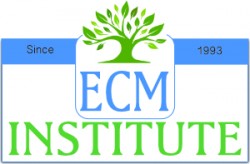Compelling Reasons For Someone To Spend Money

Give Me a Compelling Reason to Change
As a follow-on to an article I wrote in November for ImageSource Magazine, entitled “A New Way of Doing Business” , this is the second installment of why it is so crucial to properly understand the clients business and technical requirements before recommending or implementing a solution.
In traditional sales we have learned there must be a compelling reason for someone to spend money. The reason could be from pain their experiencing, an impending change i.e; like a move, a new mandate they must meet to maintain compliance, or simply the fact that management is fed-up with the incompetence of the existing office workflow. Wherever the pressure comes from, it must be “compelling” enough to make the decision maker pull the trigger, and change. While this is true, this is only one step in what has become an involved sales process!
Let me be clear, the sales process is what keeps food on the table. It is necessary and paramount. The issue is not with the fact you sold them something that they had a compelling reason to buy, the issue is: will your solution specifically address their business requirements? If yes, they will continue to supply food to your table. If no, they will tell everyone they know that you’re “eager in sales” but “apathetic in listening”! My point here is that there is a lot of work to be done prior to the sale and it should be done by business and technically competent staff. This is kind of like painting a house. The painting portion is rather easy. The preparation is really really hard!
Now let’s get down to the details…
-
Someone has to do the upfront work. This involves interviewing staff at four levels: IT, end-users, mid-level management and executive level management. Questions should be well thought out, applicable to the task at-hand and the department, gentle but to the point, and well rehearsed. Time is of the essence, especially when you’re asking high levels of management for their input. Aids (toolkits) are available for this, but aids plus training is always better.
IMPORTANT POINT: The person conducting these interviews must possess a requisite level of business acumen in order not to seem incompetent when managers explain the workflow process and then ask for suggestions. Additionally, end-users can pick up ignorance from a vendor very quickly. In both of these circumstances credibility can be damaged, and right when you as a vendor need to appear as the Subject Matter Expert! Remember, people buy from people they believe are confident about their solution and competent enough to explain it. If you don’t have a SME, you may consider outsourcing the first one or two, and ask for ‘on-the-job training’ at the same time.
-
Do you have a good solution? This is the phase where you must be brutally honest with yourself. Does your company offer a solution that will technically address the needs you have uncovered? In your bevy of offerings, you may be able to address 100% of their needs, or perhaps some degree less. As long as you match what your system is capable of doing to the specific need the client has and explain it to them, it may be enough, even if it’s not 100%. The absolute worst thing a salesperson can do is to sell something that doesn’t fit!
-
Design a solution. Finding the appropriate hardware and software is only the first step. Architecting the system is next. If the solution is a simple archival system (used to store, search and find) then it’s easy and most people with an IT background can do it. However, if automating workflow process is involved, this one can get tricky! This requires not only a true understanding of the existing workflow, and a thorough understanding of what the software can do, but also the architect needs to have a strong understanding of the Functional Requirements from client side Management. They will change it from what they need to what they want really fast. Example; I need a car to drive to work, but I want a Lamborghini… Trust me when I say; you can design and implement a system that makes perfect sense, then management sees it and says “Yeah, but what if..”. that one will get you every time! it’s called “Scope Creep”!
-
Prepare the report and the presentation. This is obviously a key element. My point is not so much about how to make it “look good”, but more about “what does it contain”. Time will not allow me to expound much, but here are some basics. It has to detail the subordinate facts from the interviews, about the present state, desired state, and Gap Analysis [differences between the two]. Then present the business case [financials]. Remember the term “compelling”? There has to be a reason to implement your solution — to change —to take action! Lastly, the report has to have the Implementation Plan, complete with change management, risk assessment, risk mitigation, a phased roll-out approach, workflow breakdown structure, and more… Again, outsource the first one, do on-the-job training, and learn to be the best at it! The first sale will cover these costs.
Doing a proper Needs Assessment changes what the clients says from “Let me think about it.” to “When can we get started?” Change is good!
“Yesterday I was clever, so I wanted to change the world. Today I am wise, so I am changing myself.”
― Rumi (Persian Poet)
Author: Byron Aulick, CDIA, ECMs, Project+ certified






